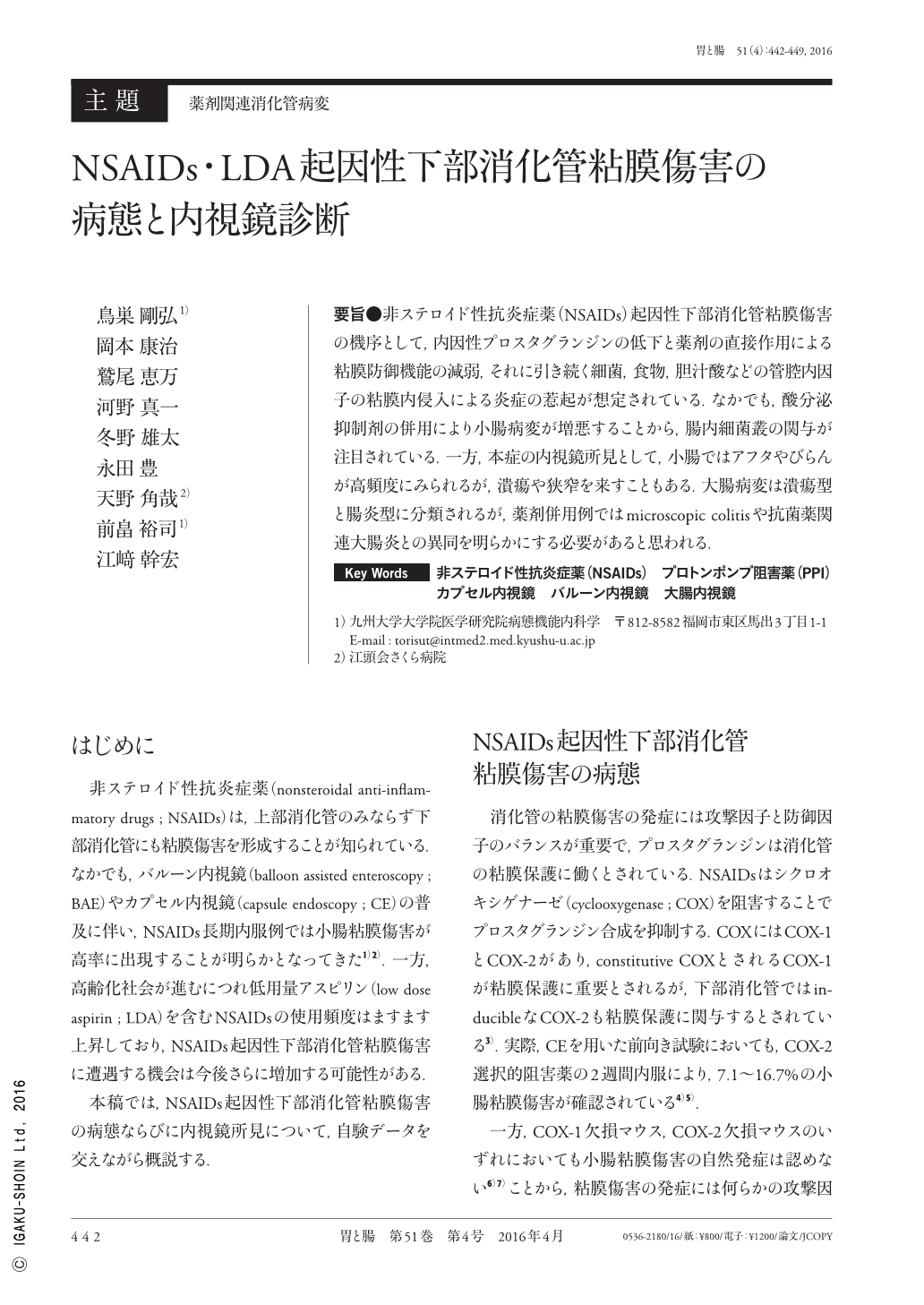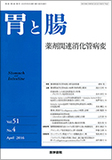Japanese
English
- 有料閲覧
- Abstract 文献概要
- 1ページ目 Look Inside
- 参考文献 Reference
- サイト内被引用 Cited by
要旨●非ステロイド性抗炎症薬(NSAIDs)起因性下部消化管粘膜傷害の機序として,内因性プロスタグランジンの低下と薬剤の直接作用による粘膜防御機能の減弱,それに引き続く細菌,食物,胆汁酸などの管腔内因子の粘膜内侵入による炎症の惹起が想定されている.なかでも,酸分泌抑制剤の併用により小腸病変が増悪することから,腸内細菌叢の関与が注目されている.一方,本症の内視鏡所見として,小腸ではアフタやびらんが高頻度にみられるが,潰瘍や狭窄を来すこともある.大腸病変は潰瘍型と腸炎型に分類されるが,薬剤併用例ではmicroscopic colitisや抗菌薬関連大腸炎との異同を明らかにする必要があると思われる.
NSAIDs-induced lower intestinal damage is reportedly caused by disturbed intrinsic prostaglandin production and direct action of NSAIDs on intestinal mucosa along with the subsequent intramucosal invasion of luminal bacteria, undigested foods, and bile acid. Among the luminal factors, the possible contribution of intraluminal bacterial flora has been recently noted. Although aphthae or erosions are most frequently seen in NSAIDs-induced enteropathy, intestinal ulcers or diaphragm-like structure can also occur. On the other hand, colonic involvement is classified into ulcerating type and colitis type. However, in patients taking NSAIDs and concurrent medications, further investigation seems mandatory to differentiate true NSAIDs-induced intestinal mucosal damage from microscopic colitis and antibiotic-associated hemorrhagic colitis.

Copyright © 2016, Igaku-Shoin Ltd. All rights reserved.


